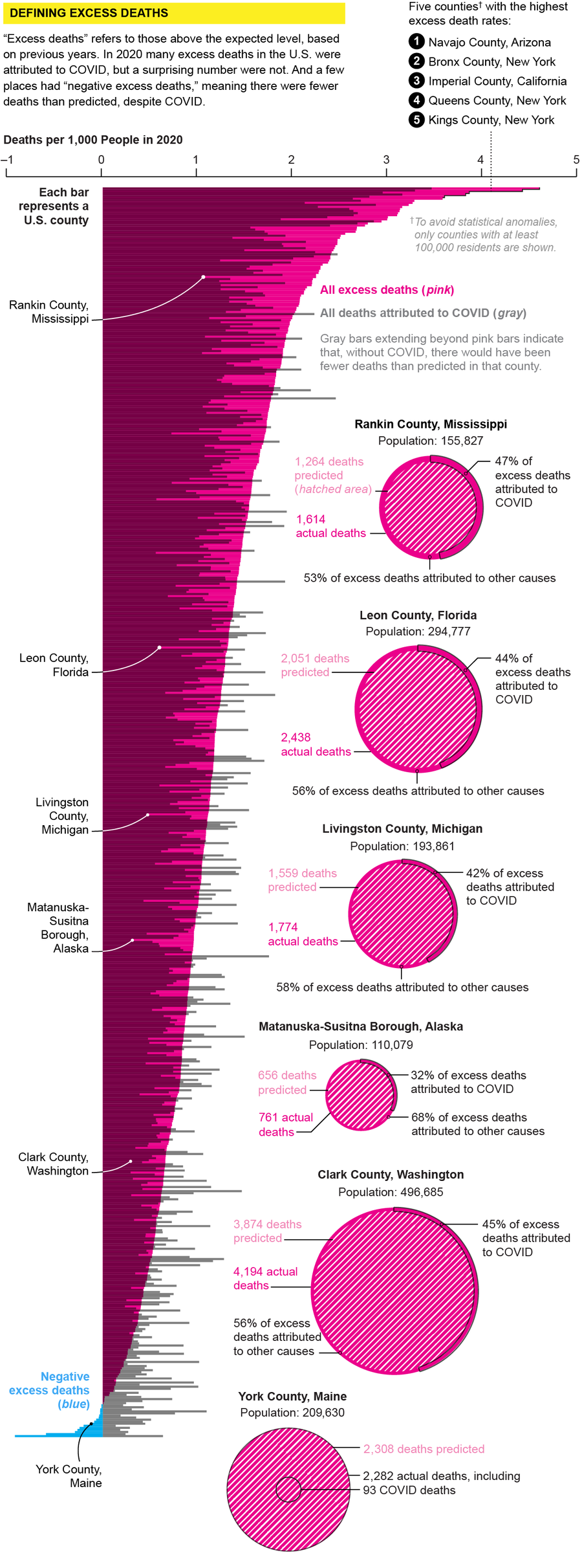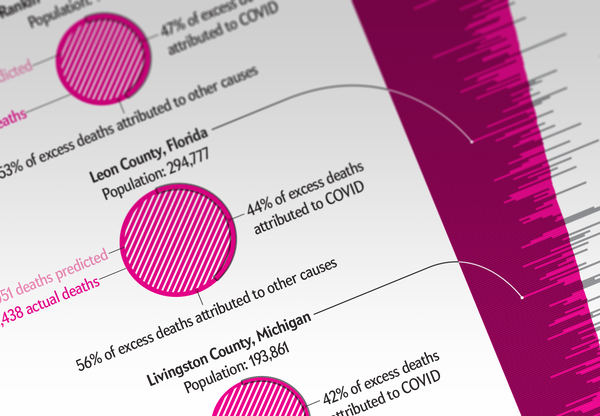The official U.S. death toll from COVID has surpassed 600,000, but the true number is likely much higher. In a preprint study, global health professor Andrew C. Stokes of Boston University and his colleagues found that in 2020 in U.S. counties with significant excess deaths (deaths beyond the expected number), only 82 percent of them on average were attributed to COVID.* Some of the biggest gaps were in rural counties, particularly in the South and West. These gaps may reflect COVID deaths that were misattributed to other causes or indirect deaths resulting from the pandemic's social and economic impacts.
An acute shortage of COVID testing early on meant that many patients never got tested. Coroners or other elected officials who lack medical experience may not have recognized COVID as the cause of death or may have declined to list it for political reasons, Stokes and his team hypothesize. Some New England counties actually had negative excess deaths last year—fewer people died than usual—possibly the result of reductions in other causes of death while people stayed at home, the researchers say.

Credit: Amanda Montañez; Source: Calvin A. Ackley, Dielle J. Lundberg, Irma T. Elo, Samuel H. Preston and Andrew C. Stokes
On supporting science journalism
If you're enjoying this article, consider supporting our award-winning journalism by subscribing. By purchasing a subscription you are helping to ensure the future of impactful stories about the discoveries and ideas shaping our world today.
*Excess deaths were calculated using provisional mortality data reported as of June 3 and may be subject to change.
